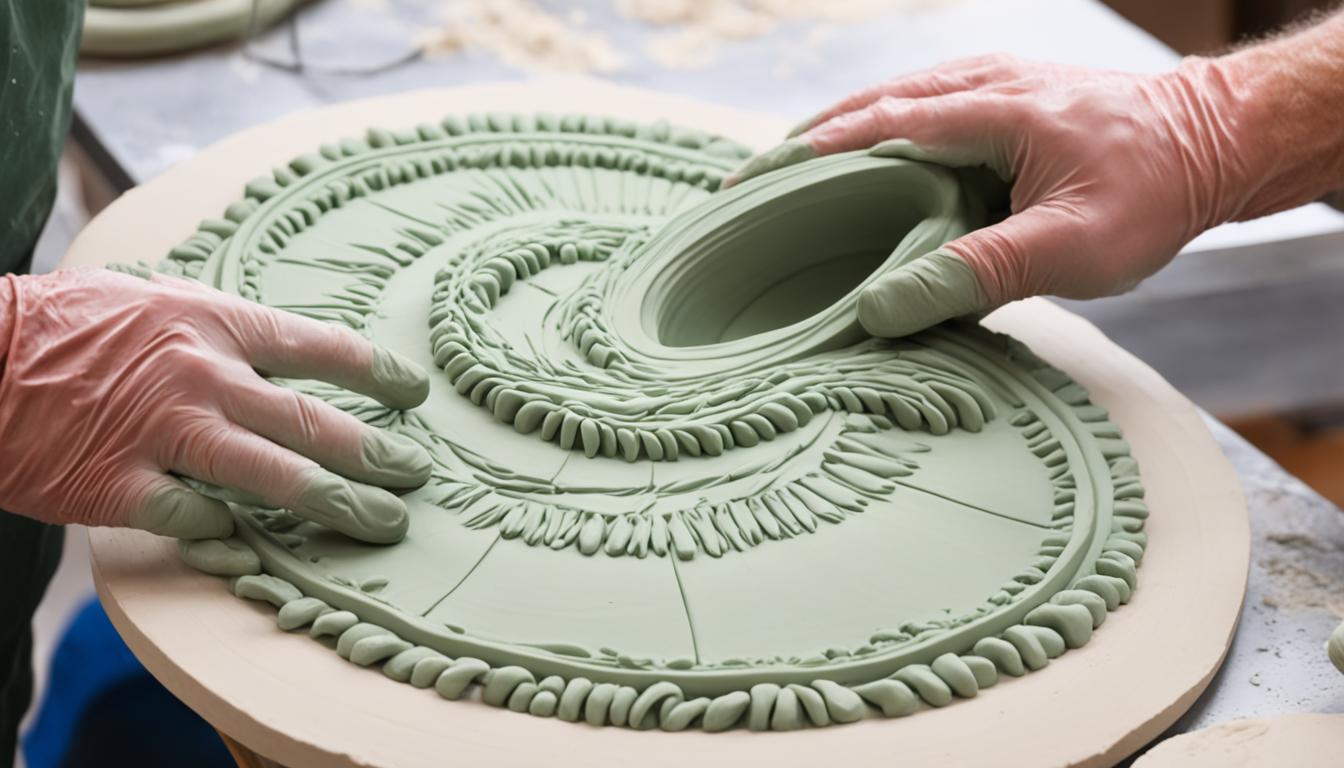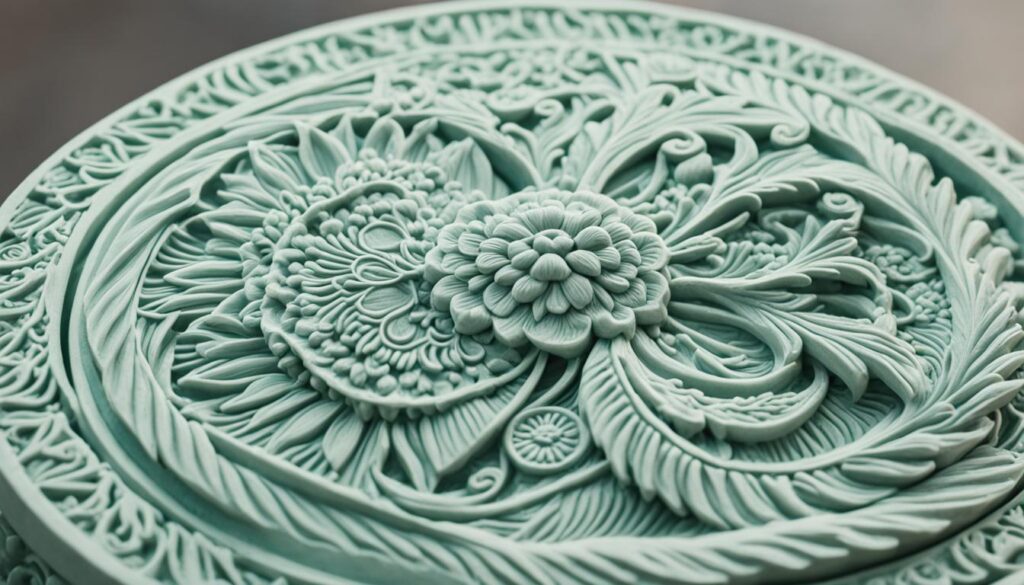
The Complete Guide to Mold clay
Whether you’re a seasoned sculptor or just starting out on your creative journey, mold clay is an essential medium that can elevate your art to new heights. Mold clay offers endless possibilities for sculpting, allowing you to bring your imagination to life in three-dimensional form. In this comprehensive guide, we will explore the world of mold clay and delve into the techniques, tips, and best practices that will help you master the art of sculpting.
Sculpting with mold clay requires a deep understanding of its properties and composition. By getting acquainted with the unique characteristics of mold clay, you can manipulate it effortlessly and create stunning sculptures that capture your artistic vision. From its malleability to its ability to hold intricate details, mold clay opens up a realm of creative possibilities.
Throughout this guide, we will cover a range of techniques that will enhance your ability to work with mold clay. We’ll explore the different methods of sculpting, from additive approaches to subtractive ones, allowing you to choose the technique that best suits your artistic style. We’ll also share valuable tips that will help you refine your sculpting skills and achieve exceptional results.
To make the most of your sculpting journey with mold clay, it’s essential to have the right tools at your disposal. From basic sculpting tools to specialized instruments, we’ll discuss the tools and materials that can elevate your sculpting experience. By understanding which tools to use and how to utilize them effectively, you’ll be well-equipped to bring your creative ideas to life.
As you embark on your mold clay sculpting journey, experimentation and practice are key. Remember to have fun, embrace the process, and allow your creativity to flow. Mold clay provides a versatile and exciting medium for sculpting, and the more you explore its possibilities, the more you’ll uncover your true artistic potential.
Key Takeaways:
- Mastering the techniques of mold clay sculpting can take your artistry to new levels.
- Understanding the properties and composition of mold clay is essential for manipulating it effectively.
- Exploring a variety of sculpting techniques will aid in honing your skills with mold clay.
- Using the right tools and materials can enhance your sculpting experience with mold clay.
- Experimentation and practice are crucial for unlocking your creative potential with mold clay.
Understanding Mold Clay
Mold clay is a versatile medium used by artists worldwide to create stunning sculptures and artistic forms. To truly harness its creative potential, it is essential to have a comprehensive understanding of its properties and composition.
Mold clay properties:
- Plasticity: Mold clay possesses excellent plasticity, allowing artists to easily shape and mold it according to their artistic vision.
- Flexibility: This type of clay offers flexibility, enabling artists to experiment with various sculpting techniques and create intricate details.
- Durability: Mold clay has good strength and durability, ensuring that the sculptures retain their shape and withstand the test of time.
- Texture: Its smooth texture allows artists to achieve refined finishes and intricate textures in their creations.
Mold clay composition:
The composition of mold clay varies depending on the specific brand and type. However, most mold clays are typically made up of a combination of natural minerals, such as kaolin clay, ball clay, and earthenware clay. These minerals are carefully blended to achieve the desired properties and characteristics required for sculpting.
Artists can manipulate mold clay using various sculpting techniques, such as handbuilding, coiling, or using molds. The ability to shape and mold the clay allows artists to bring their artistic visions to life, creating unique and awe-inspiring sculptures.
“Mold clay’s properties of plasticity and flexibility give artists the freedom to explore their creativity and push the boundaries of their sculpting skills.” – Sarah Turner, Renowned Sculptor
Comparison of Different Mold Clay Brands
| Brand | Composition | Plasticity | Flexibility | Durability | Texture |
|---|---|---|---|---|---|
| Brand A | Kaolin, ball, and earthenware clays | High | Medium | High | Smooth |
| Brand B | Montmorillonite, ball, and fire clays | Medium | High | Medium | Textured |
| Brand C | Earthenware, ball, and fire clays | Low | High | Low | Coarse |
Understanding the properties and composition of mold clay is crucial for artists looking to create exceptional sculptures. With its remarkable plasticity, flexibility, and durability, mold clay opens up a world of possibilities, allowing artists to bring their creative visions to life with precision and stunning detail.

Mold Clay Techniques and Tips
Sculpting with mold clay is a rewarding and intricate art form that requires skill and precision. To assist you in honing your craft, we have compiled a list of mold clay techniques and sculpting tips that will elevate your creations to new heights. Coupled with the right mold clay tools, you’ll be able to bring your artistic vision to life.
1. Texture and Detail
Adding texture and detail to your mold clay sculptures is essential for creating realistic and visually captivating pieces. Experiment with various tools, such as sculpting knives and texture stamps, to achieve different textures and surface effects. Don’t be afraid to explore unconventional materials like toothpicks or silicone brushes to add intricate details and enhance the overall visual appeal.
2. Armature Support
An armature provides a strong internal framework for your mold clay sculpture, ensuring its stability and longevity. Consider using materials like wire, aluminum foil, or wooden dowels to create a supportive structure. This will prevent your sculpture from losing its shape or collapsing during the molding process.
3. Layering Technique
The layering technique involves building up your mold clay sculpture in multiple layers to achieve depth and dimension. Start with a basic shape and gradually add layers of clay, blending them seamlessly to create a cohesive form. This technique allows for greater control over the final shape and enables you to refine intricate details step by step.
4. Sculpting Tools
Investing in quality mold clay tools is crucial for achieving precise and intricate sculpting work. Various tools, such as sculpting loops, wire cutters, and modeling tools, offer different functionalities and can greatly enhance your sculpting experience. Experiment with different tools to determine which ones complement your technique and artistic style.
5. Patience and Practice
Like any art form, sculpting with mold clay requires patience and practice. Don’t be discouraged if your initial attempts don’t meet your expectations. Embrace the learning process and keep practicing. Over time, you will refine your technique, develop your artistic voice, and create stunning mold clay sculptures.
With these mold clay techniques, sculpting tips, and the right tools, you’ll be well-equipped to explore the boundless possibilities of this art form. Let your creativity soar and create awe-inspiring mold clay sculptures that leave a lasting impression.

| Benefits of Mold Clay Techniques | Advantages of Using Sculpting Tips |
|---|---|
| 1. Allows for adding intricate details and textures. | 1. Helps in achieving precise and intricate sculpting work. |
| 2. Enhances the visual appeal of mold clay sculptures. | 2. Offers greater control over the final shape and form. |
| 3. Enables the creation of realistic and visually captivating pieces. | 3. Facilitates the refinement of intricate details. |
| 4. Provides a stable and supportive structure for sculptures. | 4. Aids in preventing the collapse or deformation of sculptures. |
Conclusion
In conclusion, mold clay is a versatile medium that holds immense significance in the art of sculpting. Its unique properties and composition allow artists to mold and shape it into various artistic forms, bringing their creative visions to life.
Throughout this guide, we have explored the techniques, tips, and best practices that can greatly enhance your experience with mold clay sculpting. By understanding the properties and composition of mold clay, you can manipulate it with precision and finesse to achieve remarkable results.
We have also discussed the importance of using the right tools and materials when working with mold clay. These essentials play a crucial role in refining your sculpting process, enabling you to create intricate details and textures in your clay masterpieces.
As you embark on your mold clay sculpting journey, we encourage you to explore and experiment with this versatile medium. Unleash your creative potential by pushing the boundaries of what mold clay can do. With practice and dedication, you will develop your unique style and create awe-inspiring sculptures that captivate and inspire.




